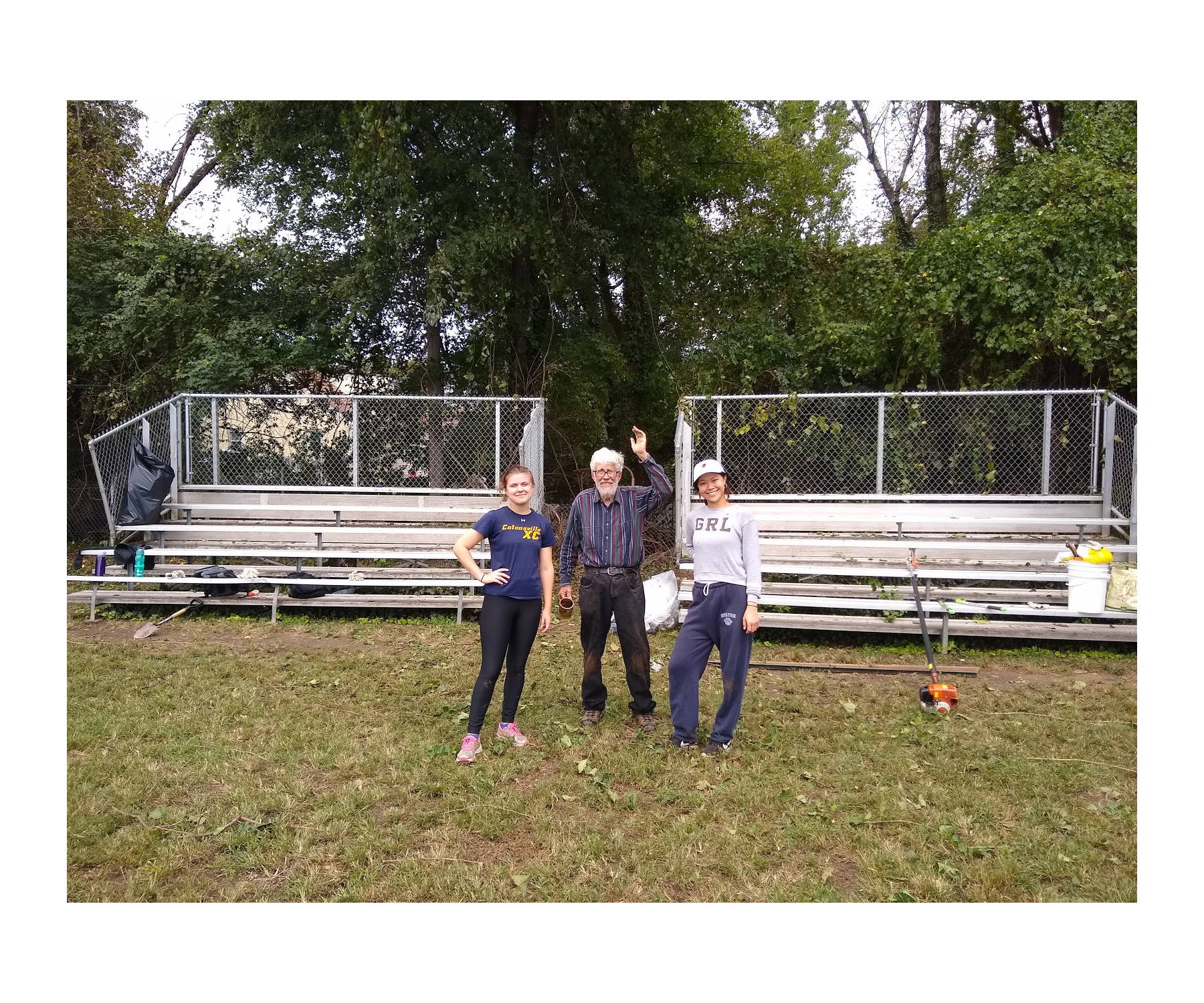 On Saturday the 22nd 2018, we embarked on an outing that shed light on the various problems associated with the invasive plant species, Amur Honeysuckle (Lonicera maackii) . Originating from Asia, Amur Honeysuckle is now very prominent in the eastern region of the United States. As a member of the honeysuckle shrub family, they are commonly referred to as “Bush” Honeysuckle to distinguish them from honeysuckle vines. They grow aggressively and can reach heights anywhere between 6 to 15 feet tall. Their leaves form dense clusters that block sunlight and inhibit growth of surrounding native fauna and flora. In addition to the threat they pose to native plants, their proliferation also increases human risk of exposure to Lyme disease by 10 fold (5). White-tailed deer, a prominent lone star tick host, are five times more likely to visit areas invaded by the honeysuckle, as they are attracted by the shelter that the plant provides. The result is greater numbers of ticks that carry the pathogen. A 2010 study reported that removing the bush honeysuckle led to a significant decrease in tick numbers (3). Removing these invasive plants requires digging them out from the roots or sawing them at the trunks, and spraying them shortly thereafter with herbicide to stop regrowth.
On Saturday the 22nd 2018, we embarked on an outing that shed light on the various problems associated with the invasive plant species, Amur Honeysuckle (Lonicera maackii) . Originating from Asia, Amur Honeysuckle is now very prominent in the eastern region of the United States. As a member of the honeysuckle shrub family, they are commonly referred to as “Bush” Honeysuckle to distinguish them from honeysuckle vines. They grow aggressively and can reach heights anywhere between 6 to 15 feet tall. Their leaves form dense clusters that block sunlight and inhibit growth of surrounding native fauna and flora. In addition to the threat they pose to native plants, their proliferation also increases human risk of exposure to Lyme disease by 10 fold (5). White-tailed deer, a prominent lone star tick host, are five times more likely to visit areas invaded by the honeysuckle, as they are attracted by the shelter that the plant provides. The result is greater numbers of ticks that carry the pathogen. A 2010 study reported that removing the bush honeysuckle led to a significant decrease in tick numbers (3). Removing these invasive plants requires digging them out from the roots or sawing them at the trunks, and spraying them shortly thereafter with herbicide to stop regrowth.
We set out to remove these invasive plants from from Melrose Park where it joins Magruder Park uphill in Hyattsville MD (4). Led by Marc Imlay (marc.imlay@mdsierra.org), Sierra Club MD Natural Places Chair, and Dawn Taft (dtaft@hyattsville.org), Hyattsville Supervisor of Environmental Programs Hyattsville City Arborist, we had three main objectives to accomplish: reduce the risk of disease, provide areas for native plants to regrow, and protect the safety of the local community. Melrose Park hosts local soccer games and the presence of the bush honeysuckle in the park puts kids at a much higher risk of contracting Lyme disease because of the higher tick densities. The clearing of the land that the honeysuckle inhabited provides more space for the regrowth of native species, bolstering the health of the local environment. The dense growth also posed a safety threat to the community, as people would often hide out in the shrubs, unbeknownst to local homeowners and park-goers. We removed about half of the Bush Honeysuckle.
Future steps for this project include removing the rest of the bush honeysuckle and planting native species. Join us - find a location near you! And check the general outdoors events calendar here
For more information, check out these links:
- https://www.sierraclub.org/maryland/blog/2016/07/battling-weeds-protecting-our-native-forests
- http://mdinvasives.org/iotm/may-2018/
- http://www.pnas.org/content/107/43/18523
- https://www.hyattsville.org/139/Magruder-Park-Amenities
- https://www.ncbi.nlm.nih.gov/pmc/articles/PMC2973004/
- https://www.sierraclub.org/maryland/invasive-species-corner
Kate Rush (Fall 2018 Political Intern) and Vivian Yu (Fall 2018 Administrative Intern)